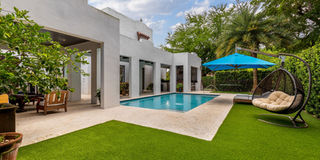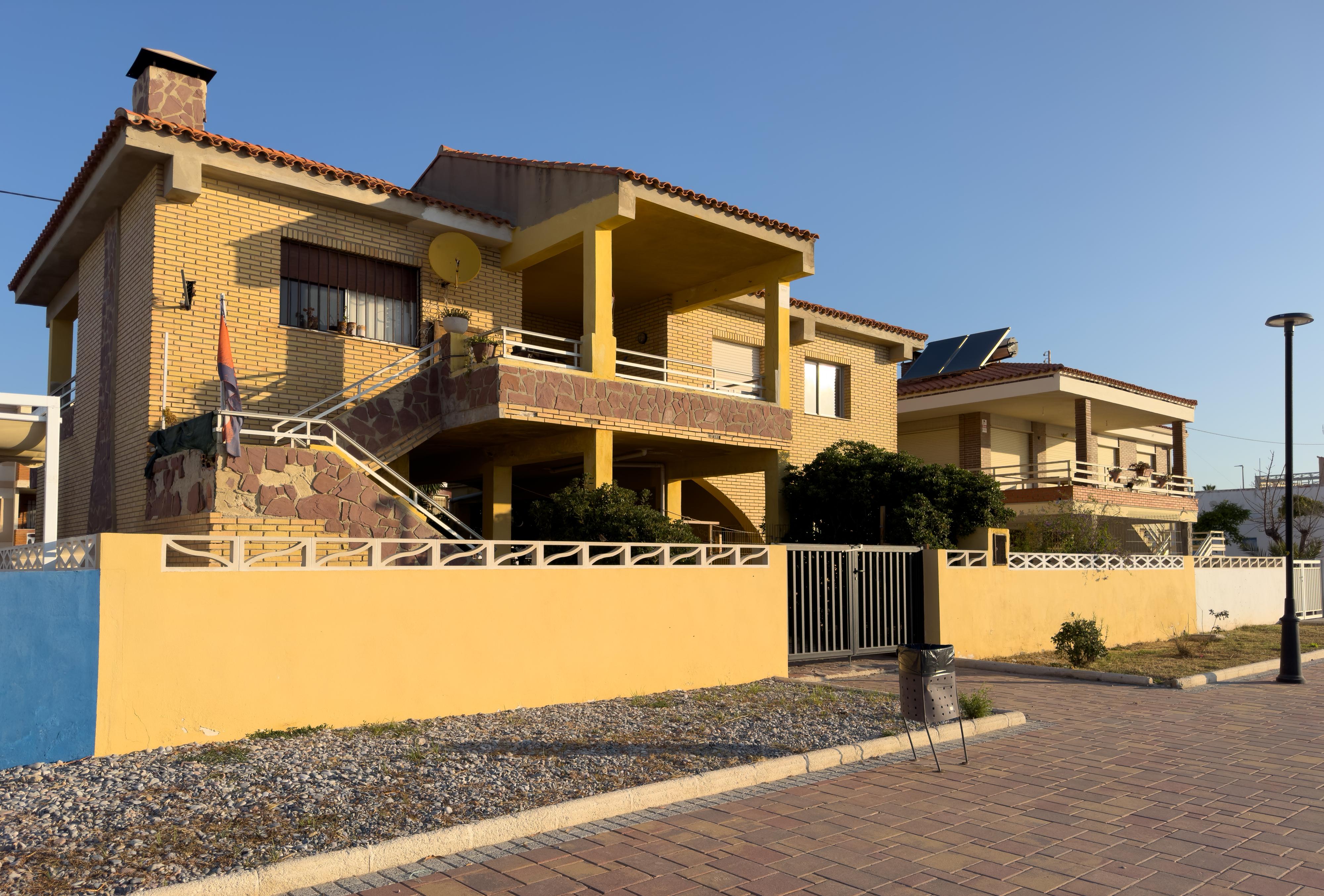
Luxury properties are distinguished by their exceptional craftsmanship, use of the finest materials, and expansive living spaces. PHOTOs/www.shutterstock.com
The real estate industry consists of a diverse spectrum of properties that cater to a wide range of preferences and budgets. Two distinct types, luxury real estate and premium real estate seem to be the latest buzzwords in the industry. Although often used interchangeably, the two are distinct and each type has a unique set of features, aspirations, and economic dynamics. The terms also reveal intriguing insights into the aspirations of buyers, the evolution of markets, and the intricate interplay between luxury and convention and can significantly impact both pricing and buyer expectations.
Luxury real estate
Phillip Mabirizi, a property manager based in Kampala says while there is no universally agreed-upon threshold to define luxury real estate, it typically represents the upper echelon of the property market, characterised by exclusivity, opulence, and premium amenities.
It includes properties such as mansions, penthouses, expansive estates with sprawling landscapes, and properties boasting architectural grandeur.
Luxury properties are characterised by their exclusivity, exceptional quality, and prestigious location. They are typically situated in prime locations such as upscale neighbourhoods in Kampala like Kololo, Nakasero, and Naguru, offering breathtaking views and proximity to high-end retail, dining, and cultural amenities.
“Beyond physical attributes, luxury properties in any city begin from a premium address in its upmarket neighbourhood. Most of these developments are planned around premium neighbourhoods, roads or streets which are in demand by the well-heeled and affluent consumer groups. With that comes the added comfort of space, the convenience of premium social conveniences being close by and in many cases of vertical neighbourhoods, the views.
Adding to that come the advantages of larger-than-life or luxury amenities such as private clubs, Olympic-sized pools, heated indoor pools, boutique restaurants, and exclusive gyms which cater to the lifestyle of the premier citizens who go on to become the residents of these coveted addresses. When it comes to the location of modern luxury properties, these areas are evolving to offer a comfortable life,” Mabirizi adds.

Bathrooms are designed as private sanctuaries.
Who buys luxury real estate?
The dynamics that govern the luxury real estate market differ from those of premium real estate because the former’s value is intrinsically tied to factors beyond basic housing requirements. Although sometimes economic cycles can influence their demand, they are often buffered by the financial stability of high-net-worth individuals.
“This means that unlike other kinds of real estate that respond to economic fluctuations, job growth, interest rates, and population growth, luxury real estate tends to remain stable and only responds to global economics. It targets a niche market of affluent buyers and investors who seek exclusivity, superior quality, and the potential for lucrative returns,” he says.
Luxury real estate often features sophisticated, elegant, and meticulously crafted branding. The design elements, including logos, color schemes, and typography, are chosen to reflect opulence and refinement.
Features
In the real estate industry, perception is everything which is why luxury property developers pay close attention to the property’s aesthetics. These properties will often feature visually appealing façades, exquisite interior decor, meticulously landscaped gardens, and an overall ambiance that exudes sophistication.
“When someone is investing a billion shillings in a home, they expect nothing less than perfection. Luxury real estate is not just about buying a place to live; it is about buying into a lifestyle. Be it timeless elegance or modern luxury developers often design properties that align with the buyers’ personal aesthetic preferences and lifestyle aspirations,” Mabirizi notes.
Demographics
The luxury real estate market is influenced by the unique preferences and characteristics of different generations. For instance, what was considered luxurious by Baby Boomers might not seem so to millennials. Projections suggest that the industry is shifting, with millennials and baby boomers wielding substantial influence.
Many of these affluent buyers are drawn to urban living and seek properties that can support multigenerational living situations. Some millennials are happy to relocate to the tranquility of rural areas due to remote work opportunities.

Premium properties feature state-of-the-art appliances that blend seamlessly into sleek, contemporary layouts.
Premium properties
Jerry Kalema a real estate broker says although premium real estate is a notch lower than luxury real estate, it is still above the ordinary and focuses on delivering exceptional quality and value to buyers.
“Right now, Uganda has a booming premium real estate market. Many developers invest in properties that cater to a broader market segment, appealing to buyers who desire upscale features without the extravagant price tag,” says Kalema.
Kalema notes that many of these properties are coming up in city suburbs for instance, in Kampala they are situated in Munyonyo, Bugolobi and Butabika, among others.
Design and architecture
What distinguishes premium real estate according to Kalema, is its investment in high-quality construction and appealing designs.
“They often feature modern aesthetics and high-end finishes that appeal to discerning buyers. The architecture is stylish and functional, offering a comfortable living experience,” he notes.
Premium properties are typically larger than average, with ample living space, multiple bedrooms and bathrooms, and often a garden or yard. They provide a spacious and comfortable environment for families.
Features
Premium properties are characterised by their emphasis on modern amenities and high-quality craftsmanship, tailored to enhance residents’ lifestyles with both luxury and functionality in mind. They feature state-of-the-art appliances that blend seamlessly into sleek, contemporary layouts.
The use of premium materials like granite countertops not only adds a touch of elegance but also ensures durability and easy maintenance, catering to the practical needs of homeowners.
Bathrooms in premium properties are designed as private sanctuaries, often featuring luxurious finishes such as marble or high-end ceramic tiles. The fixtures and fittings are selected for both aesthetic appeal and functionality, offering residents a spa-like experience within the comfort of their own homes.
Community amenities, such as pools, gyms, and landscaped gardens, further enhance the premium living experience by providing residents with opportunities for relaxation, recreation, and socialising without leaving the comfort of their residential complex.
Price range
Distinguishing between premium and luxury properties in the Ugandan real estate market is essential for both investors and homebuyers. Mabirizi notes that premium properties occupy the higher echelon of the local price spectrum, making them accessible to a broader segment of affluent buyers. They represent a significant investment, offering superior quality and amenities that cater to individuals who seek a balance between luxury and practicality.
Premium properties typically feature upscale finishes, modern amenities, and desirable locations within prime neighbourhoods. They appeal to discerning buyers looking for a higher standard of living without the exclusivity and premium associated with luxury properties. These homes often provide a comfortable and stylish living environment suitable for affluent families and professionals.
In contrast, luxury properties command top-tier prices that far exceed those of premium properties. These properties are designed to offer an unparalleled living experience characterised by opulence, exclusivity, and prestige. Luxury properties are distinguished by their exceptional craftsmanship, use of the finest materials, and expansive living spaces. They are often located in prime, sought-after areas with breathtaking views or historical significance.
Beyond their physical attributes, luxury properties also offer comprehensive services and amenities such as private spas, gourmet kitchens, extensive landscaped gardens, and personalised concierge services. These features cater specifically to ultra-wealthy individuals who value privacy, exclusivity, and the highest standards of living.
When considering investment in luxury properties, buyers are not just purchasing a home but also acquiring a prestigious asset that reflects their status and lifestyle. These properties are often seen as a statement of wealth and achievement, appealing to affluent individuals who desire the very best in terms of design, location, and amenities.

Bedrooms are expansive.
Before buying
Investing in a luxury property not only symbolises wealth and prestige but also demands meticulous attention akin to purchasing high-end gadgets or luxury cars. Before committing to a purchase, Kalema urges buyers to conduct comprehensive due diligence on various aspects of the property and its developer first.
“Start by evaluating the developer’s credentials and track record. This includes assessing their past projects to gauge their execution capabilities and reliability. A developer with a proven track record is more likely to deliver on promises and ensure the quality and timely completion of the luxury property,” he advises.
The location also plays a crucial role in its long-term value and desirability. Factors such as proximity to amenities, accessibility, neighborhood reputation, and future development plans can significantly impact the property’s appreciation potential.
Consider the density of the project and the exclusivity it offers. Luxury properties often boast low-density living environments with spacious layouts and premium amenities. Understanding the project’s density can help determine the level of privacy and comfort it provides.
Examine the layout and design of the apartment. Efficient and well-thought-out layouts maximise space utilisation and enhance the overall living experience. Pay attention to details such as natural light, ventilation, and ergonomic design elements.
Lastly, assess the potential for value growth. While luxury properties typically appreciate over time, factors such as market trends, economic conditions, and ongoing development in the vicinity can influence their investment potential. It is crucial not to be swayed solely by the curated image or marketing hype surrounding a luxury property. Many buyers have been enticed by superficial aspects only to face challenges later, such as difficulty in finding tenants or buyers, or unexpected maintenance costs.








